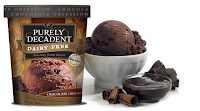 The most recent Small Bites survey asked visitors to classify eating healthy on a budget as:
The most recent Small Bites survey asked visitors to classify eating healthy on a budget as:"Possible and easy" (27%)
"Challenging, but doable" (58%)
"Very hard" (13%)
"Impossible" (1%)
I am very happy to see that a solid 85% of voters consider it to at least be “doable.”
The truth is, healthy eating (which I defined as “balanced, nutritious, and meeting most nutrient daily values”) does not need to be a wallet-buster.
Let’s clarify a few issues.
1. Healthy eating does not need to be organic.
If you can afford organic, go for it. If your budget doesn't allow for it, that doesn't mean you can't have a perfectly healthy and balanced diet.
Whole wheat pasta will always contain at least 5 grams of fiber per serving, organic or not, and both organic and conventional peanuts are a wonderful source of heart-healthy monounsaturated fats.
Besides, as far as our bodies are concerned, there is no difference between an organic and conventional 400-calorie chocolate chip cookie.
2. Healthy eating does not need to be exotic.
Every few months some new “miracle” fruit comes along.
I am sure you are familiar with the process by now.
It is usually from another continent and, after being profiled in the mass media, is quickly turned into a juice drink packed in a beautifully shaped glass bottle (displaying a brand name with an accented vowel) that retails for a ridiculous price.
Here's the thing: ALL fruits are healthy.
Yes, some offer more nutrients than others, but there is no such thing as a fruit that is unhealthy or should be avoided.
Similarly, I don't like to label any food as a "miracle" or "superior" one.
Besides, acai berries are exotic in the United States, but as run of the mill as apples are to us in their native Brazil.
3. Nature is cheaper than major food companies.
Instead of tortilla chips with flaxseeds (which aren’t even grounded up, meaning you aren’t absorbing any lignans,) buy ground flaxseed and sprinkle it onto different foods.
A standard bag of ground flaxseed retails for $5 (almost as much as gourmet tortilla chips) and lasts for months if you only use up a tablespoon each day -- which is plenty.
Remember, what drives up food costs isn't so much nutrition as it is convenience.
A six-pack of single-serving applesauce containers may be convenient, but for that same amount of money you can buy enough apples to make five times that much applesauce.
I specifically mention apples because they can sit in a fruit bowl for days before they start to rot.
They are portable, delicious, and you don't need any utensils to eat them. Talk about convenient!
A Luna bar may be convenient, but so is packing a small Ziploc bag of peanuts and raisins to snack on later in the day (the latter is also significantly cheaper.)
4. Sometimes a big name isn't a good deal.
Many foods (canned beans, plain oatmeal, raisins, and frozen vegetables) are equally nutritious whether they are made by a generic or well-known brand.
5. Speaking of beans...
... they are a wonderful and inexpensive way to get protein and fiber.
Use them for vegetarian chilis, bean salads, or even to make your own hummus at home (it’s simple – just blend together chickpeas, tahini, olive oil, lemon juice, and salt!).
In conclusion...
Junk food is very financially accessible, but so are many nutritious foods.
PS: I'm interested in reading YOUR tips for eating healthy when money is tight. Post away!





































